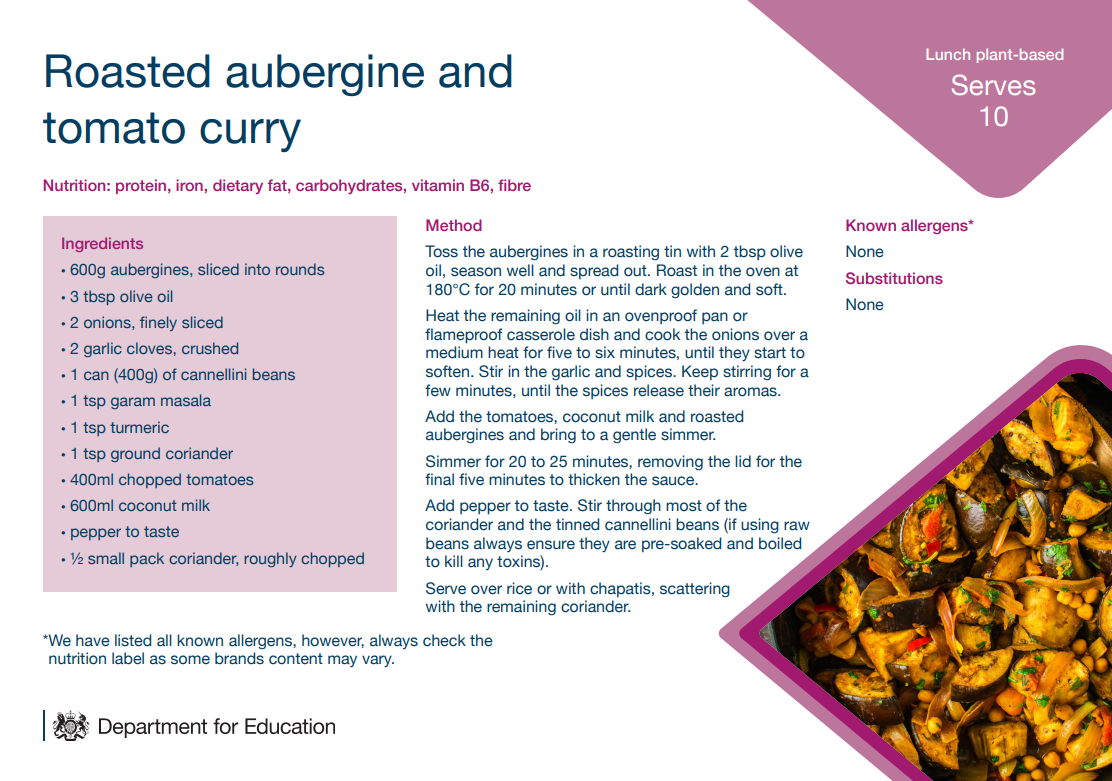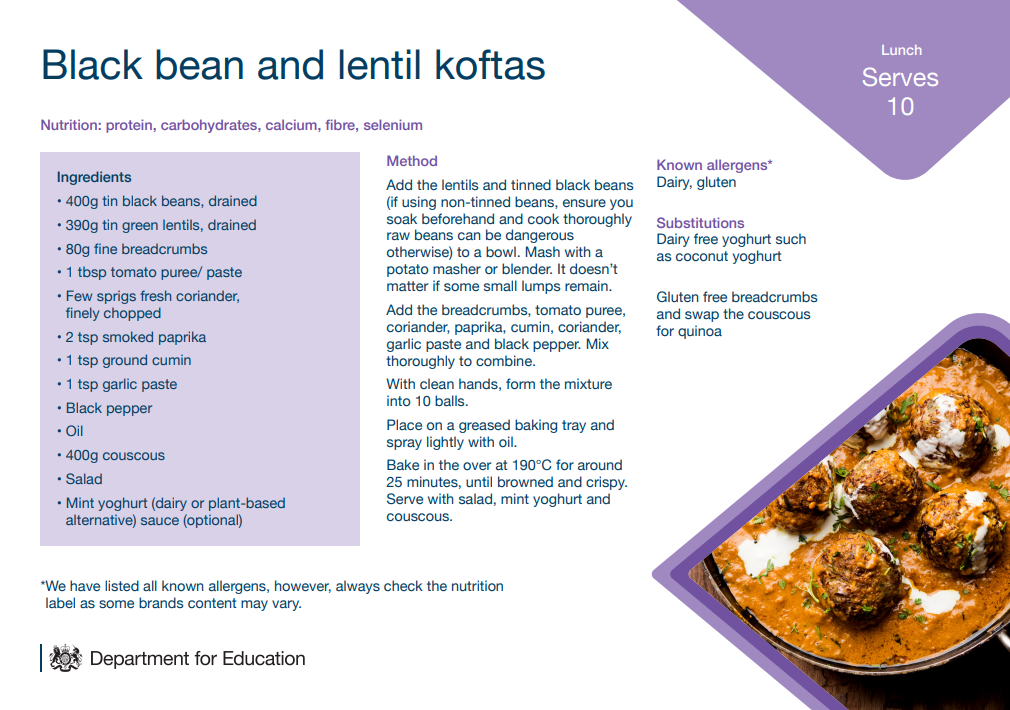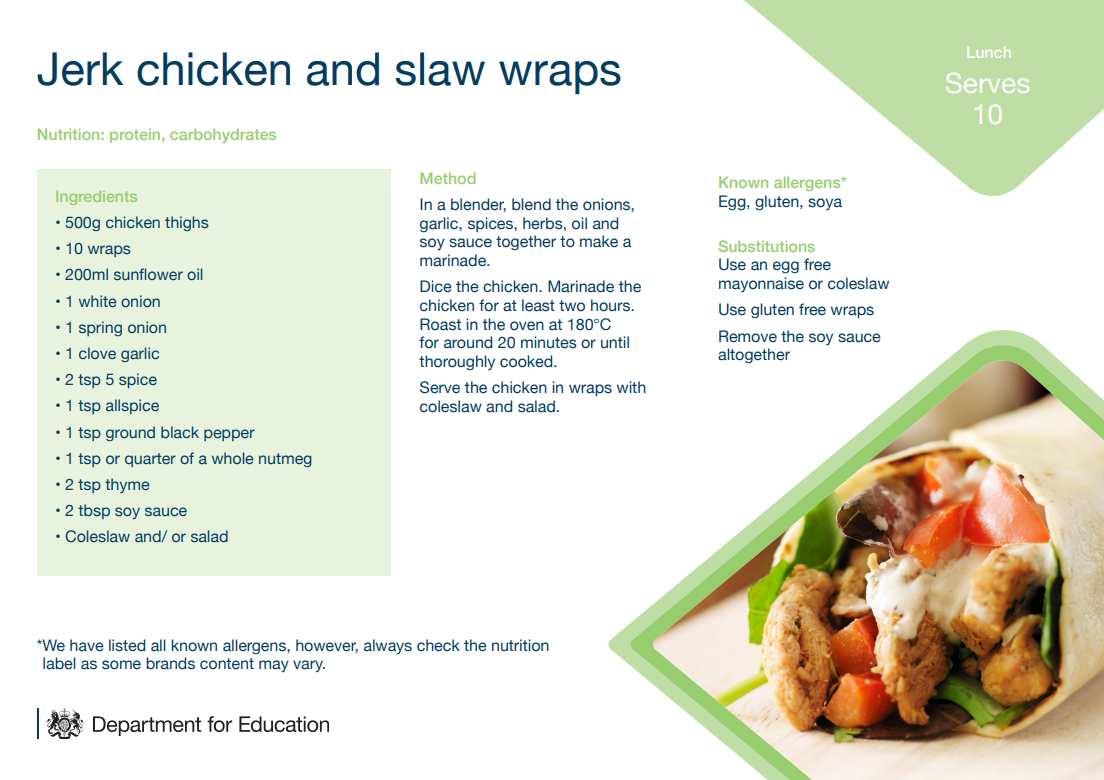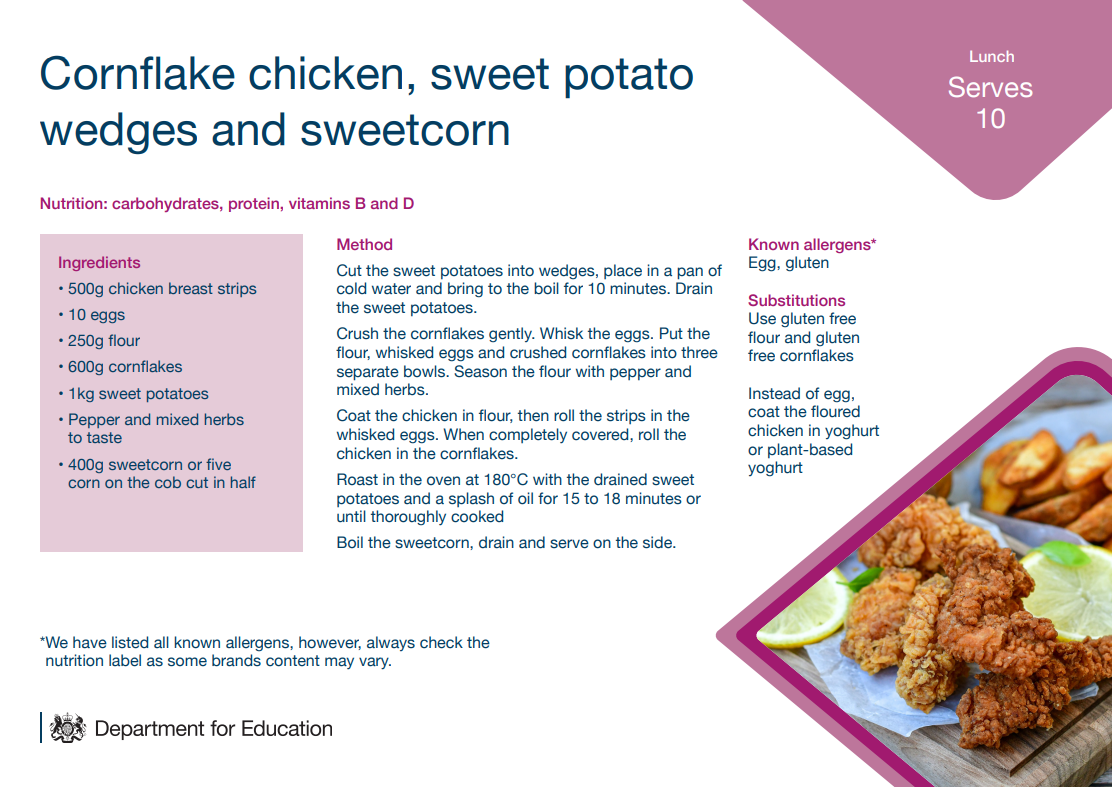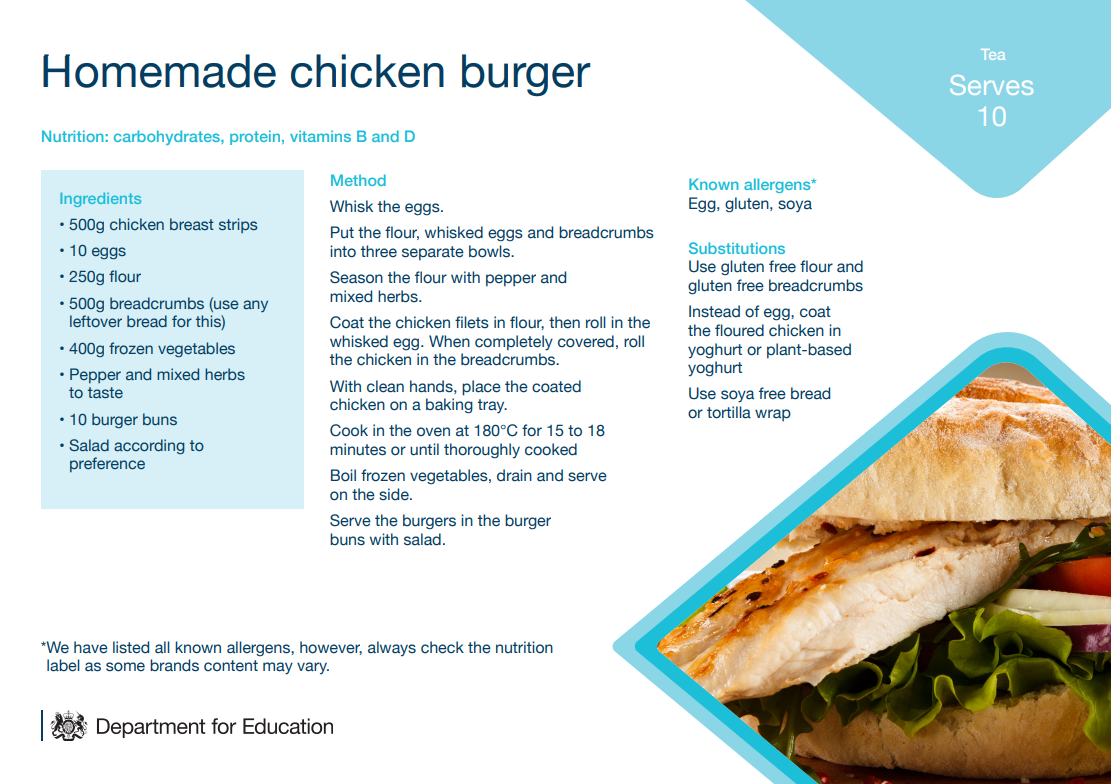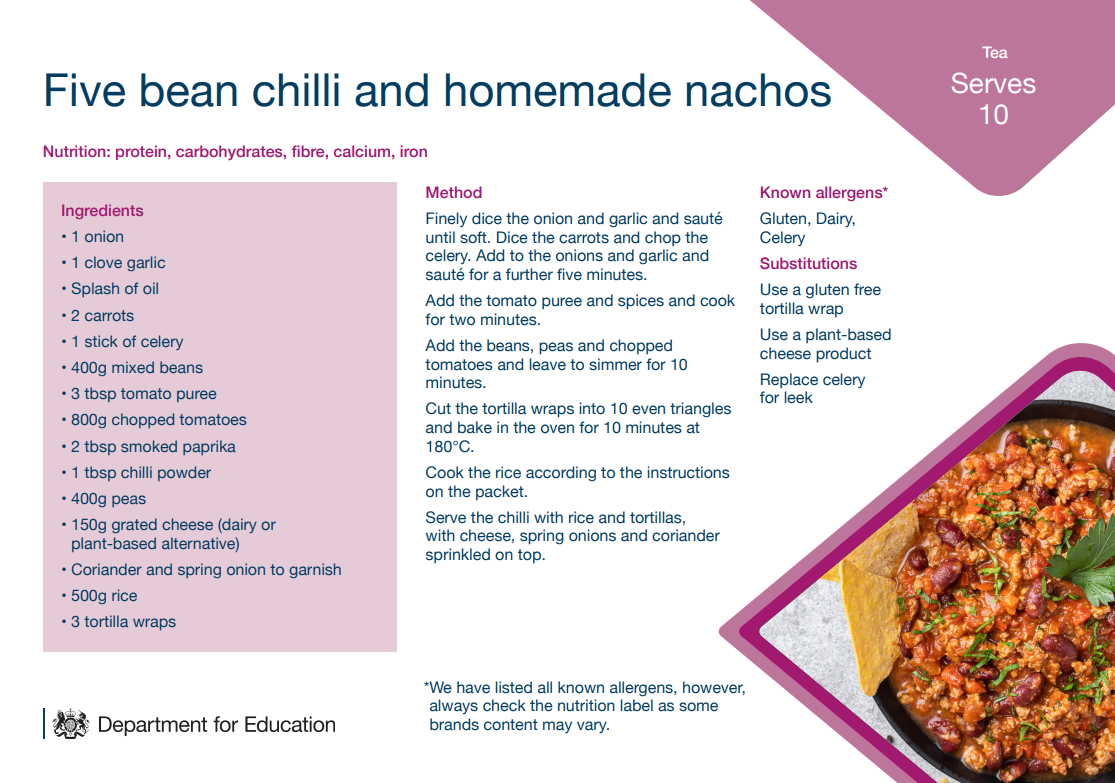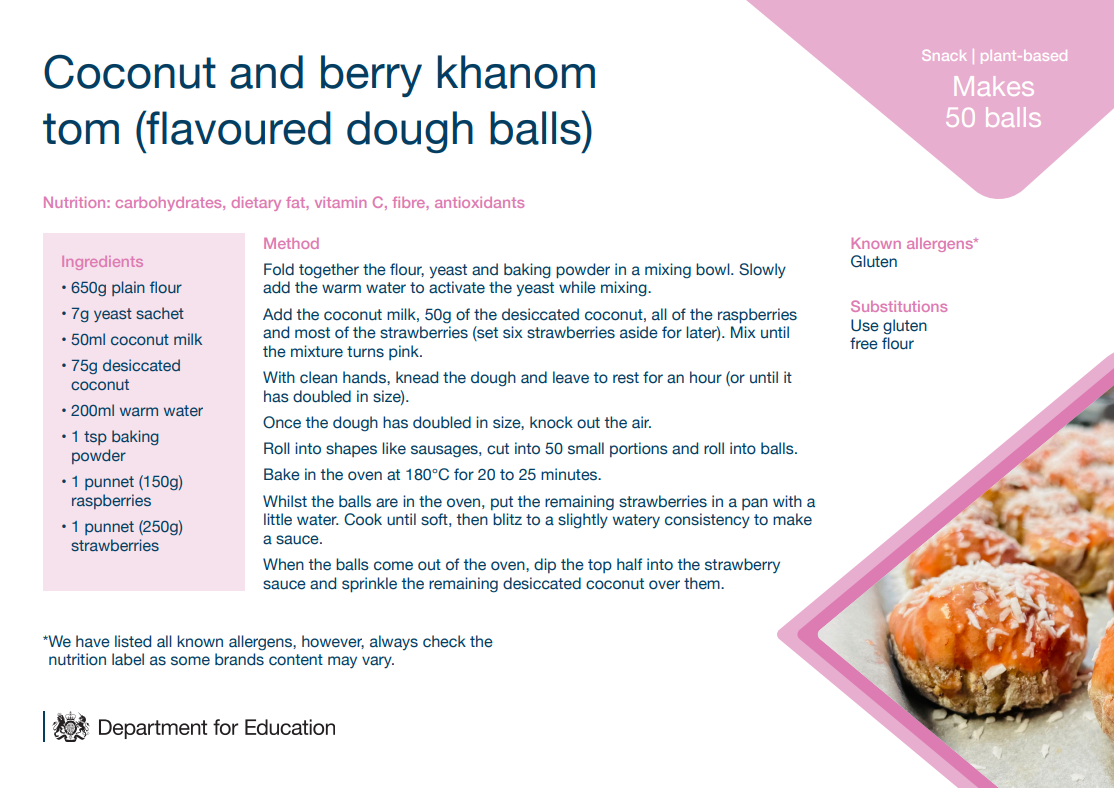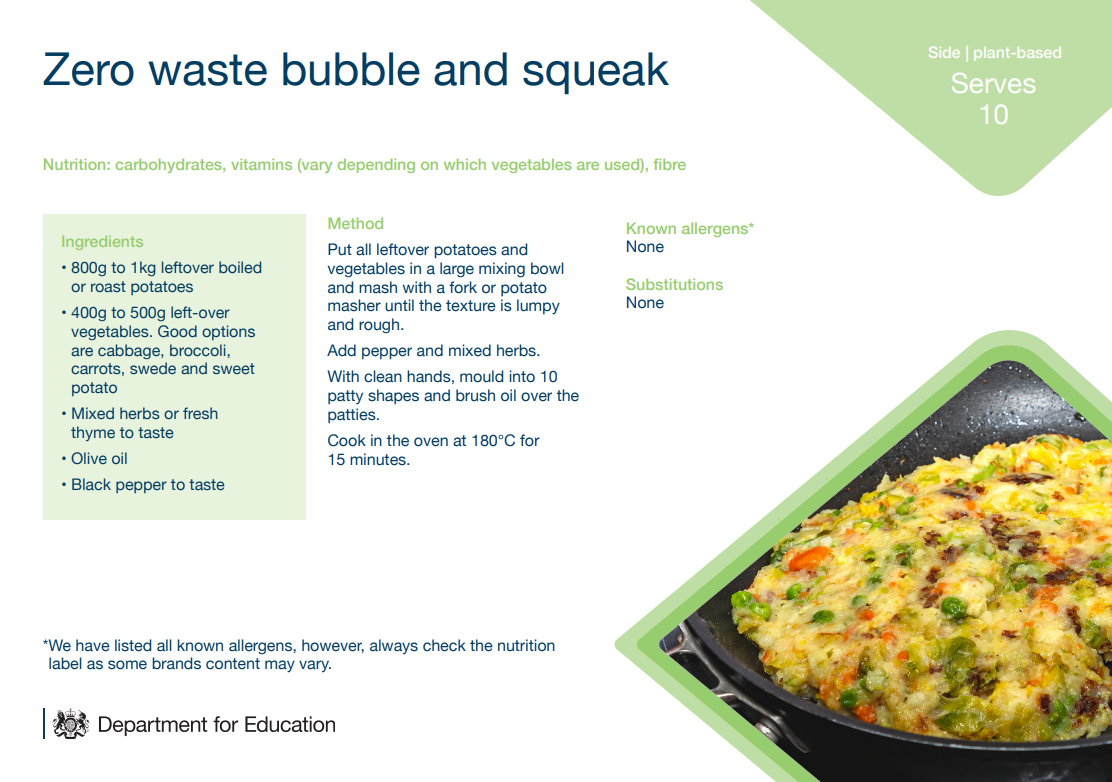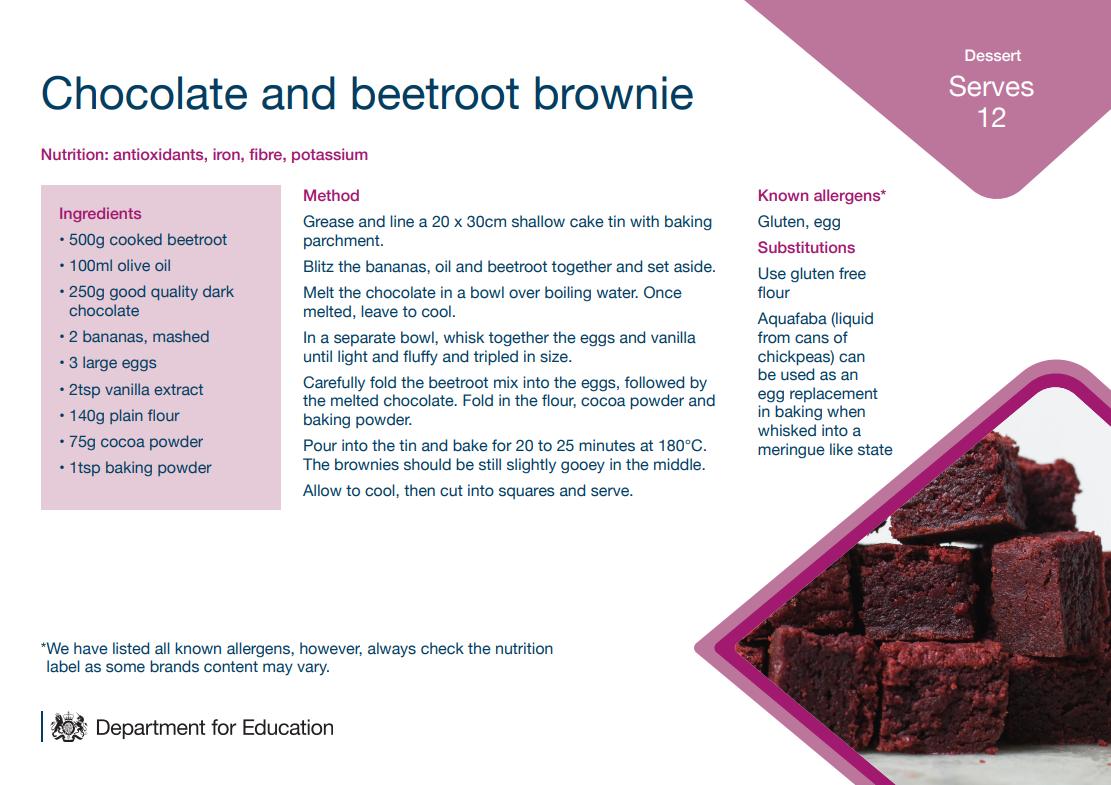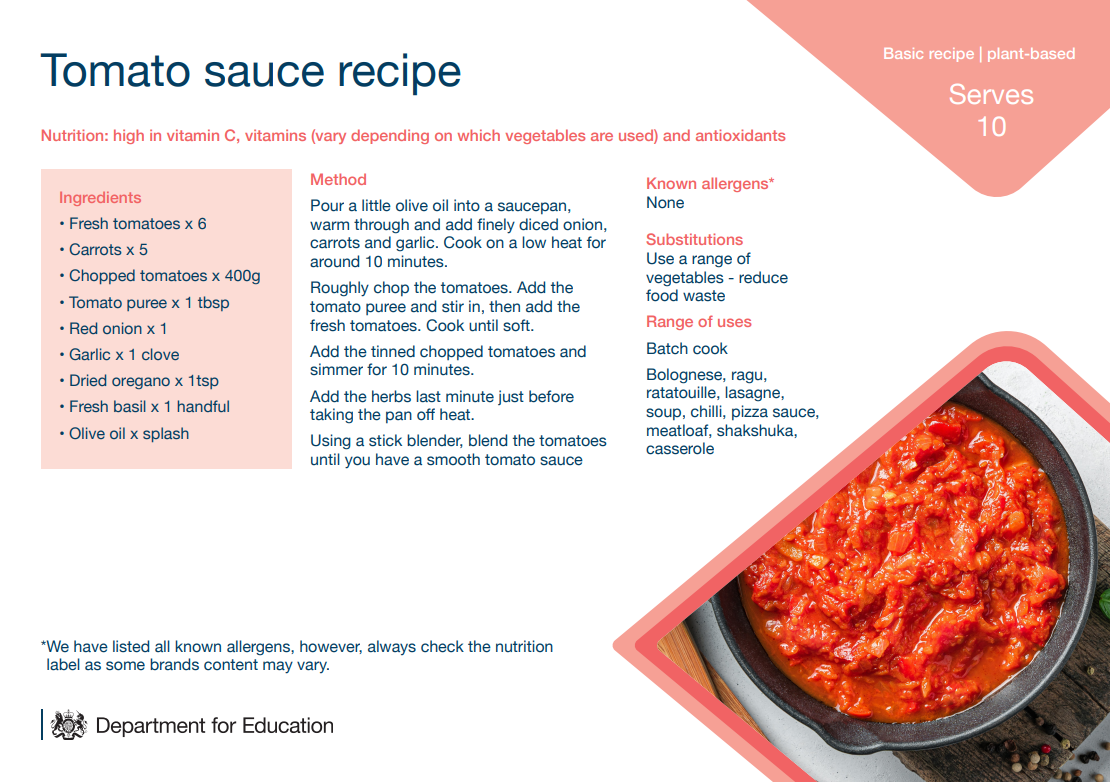Cost-effective healthy food
Tips and recipes to make it cheaper and easier to serve healthy food.
Cost-effective healthy food
Use these recipes and top tips to make it cheaper and easier to serve healthy food.
Recipes for your settings
Here are 11 recipe cards for early years settings. There are four recipes for lunch, 3 recipes for tea, 1 snack, 1 dessert and 1 side dish that is made using leftovers.
These recipes have been created to be suitable for a wide range of children, including those with special dietary requirements. Using these recipes, you can cook once and feed all the children at the same time, saving time and money.
NHS best start for life also has recipes and meal ideas for babies and children aged 5 and under. You can scale these recipes to feed more children and share the recipes with parents or carers.

